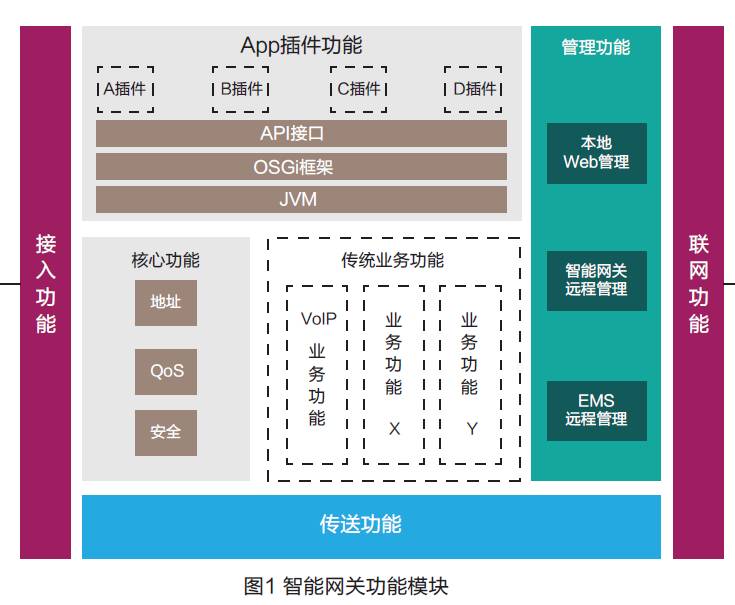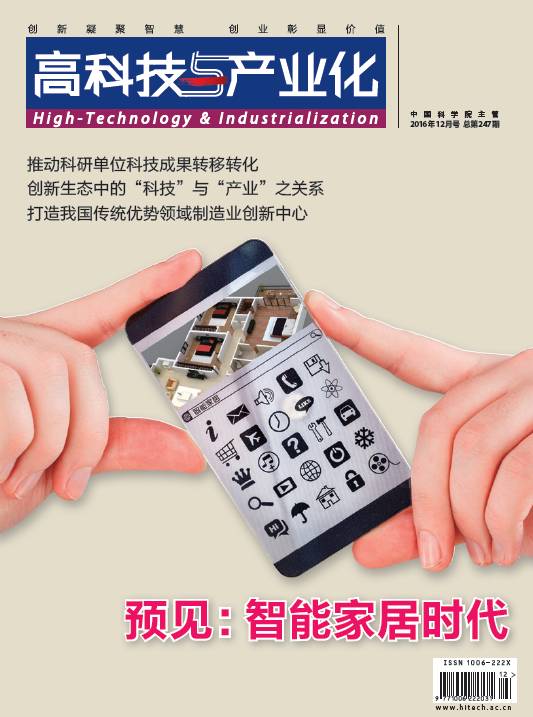Click the “High Technology and Industrialization” above to subscribe!


In 2016, China Mobile established a broadband development strategy centered on three core capabilities: network, business, and service. The network capability refers to the end-to-end network carrying capacity from user terminals to network access, traffic diversion, and content acquisition; the business capability refers to the end-to-end business processing capability from user consultation, business acceptance, order dispatch, network resource allocation, to on-site installation; the service capability refers to the end-to-end quality assurance system from user complaints, channel acceptance, remote testing, backend support, to on-site maintenance.
As of the end of October 2016, China Mobile had accumulated 75.51 million wired broadband users. Among all wired broadband users, over 98% adopted PON technology for access, with approximately 85% using GPON technology. Meanwhile, about 70% of the contracted users across the network adopted FTTH access.
Progress of Smart Gateway Industry Standards
With the rapid popularization of wired broadband services in China, the access devices deployed by operators in users’ homes have evolved from bridge-type SFUs (Single Family Units) to router-type HGUs (Home Gateway Units). As a broadband service channel, SFUs lack home network management capabilities and only provide a layer 2 channel, making control inflexible; HGUs, as home connection centers, have Wi-Fi connectivity, can flexibly manage services, and automatically deliver services, providing users with simple value-added services such as IPTV.
Today, various internet services are flourishing, and router-type home gateways can no longer meet the flexible value-added service expansion and deployment needs such as smart acceleration, parental controls, and home security. Smart gateways provide flexible plugin extension capabilities through an open operating system, serving as a value-added service center to offer richer and more flexible services to homes.
In terms of industry standards, the China Communications Standards Association initiated the series of standards for “Broadband Customer Smart Gateways Based on Public Telecommunications Networks” in 2016, planning two parts: “Part 1: General Technical Requirements for Broadband Customer Smart Gateways Based on Public Telecommunications Networks” and “Part 2: Technical Requirements for Home Smart Gateways Based on Public Telecommunications Networks.” Part 1 organizes and standardizes smart gateways from four aspects: system architecture, business support capabilities, device functional requirements, and management functional requirements. The standard clarifies a two-layer management architecture of the gateway management platform and application management platform based on the dual attributes of smart gateway networks and services. The gateway management platform mainly includes gateway function management and plugin management, establishing a management interface directly with the smart gateway; the application management platform includes plugin review presentation, mobile client management, portal management, and data statistical analysis, mainly related to application plugin functions, establishing a management interface with the gateway management platform and managing the smart gateway through the latter.
Part 2 provides more detailed specifications for home smart gateways, including position and functional reference models, interfaces, device functions, security functions, operational management and maintenance, performance, and other aspects.
Both parts of the standards completed the draft for public consultation in August 2016 and are planned to be submitted for approval by the end of 2016.
China Mobile’s Smart Gateway Specifications and Technical System
In early 2016, China Mobile began to release a series of enterprise standards for smart gateways, comprehensively regulating the technical requirements for smart gateways and their management platforms, including functions and interfaces. There are three relevant specifications for smart gateway device technology: “China Mobile Smart Home Gateway Technical Specification,” “China Mobile Smart Home Gateway Interface Technical Specification – Terminal Management Volume,” and “China Mobile Smart Home Gateway Interface Technical Specification – Plugin Management Volume.”
The above three specifications form the basic technical system for China Mobile’s smart home gateways:
a) An OSGi framework based on JVM provides flexible plugin loading capabilities, encapsulating gateway capabilities into 39 categories and over 140 APIs for upper-layer JAVA applications.
b) Terminal management is based on the TR-069 protocol, achieving gateway function management (including management of gateway layer and VoIP functions), API permission management, etc.
c) Plugin management is based on JSON encapsulation protocol, achieving management of plugin installation, uninstallation, startup, and shutdown.
By introducing an open platform based on smart OS, it opens up to services: currently, mainstream operating systems or foundational frameworks for home routers include OpenWRT, OSGi framework, and Android. OpenWRT, based on a C environment, is an open-source operating system developed for router devices, with an active developer community, but limited by Native Linux, it has weak cross-hardware platform capabilities. The OSGi framework, based on a JAVA environment, naturally possesses strong cross-platform running capabilities, but has weak foundational package support for router-type devices; the Android platform is designed for “screened” terminals, based on Linux OS at the bottom and Java technology at the top, offering excellent flexibility and openness, with a complete ecological chain, but consumes significant system resources, providing weak support for gateway-type services and API design. Considering key factors such as multi-manufacturer and low-cost requirements for operator smart gateway devices, China Mobile’s smart gateway adopts an OSGi architecture with cross-platform capabilities, opening up basic gateway functions through extended APIs. Seven functional modules achieve intelligence. As shown in Figure 1, the smart gateway consists of seven functional modules: access function, networking function, transmission function, core function, business function, management function, and application plugin function. Among these, the first five functions are the same as traditional router-type home gateways; the remote management in the management function includes a plugin lifecycle management interface based on JSON encapsulation; the APP plugin function is a major new feature of the smart gateway, serving as the core part for providing flexible business expansion to users. The smart gateway achieves various intelligent business logics, including operation and maintenance, acceleration, storage, etc., by loading various application plugins and calling the aforementioned API interfaces.

API Permission Management of Smart Gateways
The smart gateway opens its underlying capabilities in the form of APIs to upper-layer applications. This capability opening provides flexible interfaces for upper-layer businesses while exposing some core functions of the gateway to third-party applications. Therefore, to ensure the security and stability of smart gateway devices, API permission management is particularly important.
In China Mobile’s smart gateway technical system, permission management is divided into two main parts. First is the plugin review stage, where permissions are audited on the platform, which comprehensively checks whether the plugin calls illegal API interfaces that have not been applied for on the platform or for which the platform has not opened permissions. Secondly, during operations such as plugin installation, the smart gateway performs local permission management to ensure that the plugin does not call APIs beyond its scope while running locally. This local permission management function is completed by TR-069 protocol configuration management. By issuing different API permission policies for each plugin, the smart gateway can control the actual API interface permissions called by each plugin. In practice, based on the richness and flexibility of smart gateway services, a templated API permission strategy can be adopted to reduce configuration workload, or a customized API strategy can be used to tailor a permission list for each plugin. Considering that the business logic currently carried by smart gateways is still in its infancy, China Mobile temporarily adopts a more convenient and user-friendly templated API permission configuration method.
Testing and Pilot Implementation of Smart Gateways
While completing a series of enterprise specifications, China Mobile actively engaged various parties in the industry chain to conduct a series of smart gateway tests. Laboratory testing began in early June 2016 and ended in mid-October, testing smart gateway devices from six manufacturers, including two of China Mobile’s own R&D units. This testing comprehensively evaluated the maturity of traditional functional modules such as access function, transmission function, networking function, address function, and QoS function, while also thoroughly testing new functions such as plugin lifecycle management and API permission management. The testing adopted a fully decoupled networking method at the PON layer and cross-utilized TR-069 management platforms from five different manufacturers, considering the complex situations of manufacturer combinations during actual deployments in different provinces. After three rounds of testing and rectification, the laboratory testing pass rate for all six manufacturers reached over 95%.
In October 2016, China Mobile launched pilot testing for inter-manufacturer interoperability of smart gateways, selecting five provinces and cities: Anhui, Gansu, Beijing, Henan, and Hebei. All six smart gateway manufacturers that participated in the laboratory testing fully engaged in this pilot testing. The pilot testing is still ongoing, and based on the results from completed pilot tests in Anhui, Gansu, and Beijing, the first-pass success rate for various test items is good, laying a technical and application foundation for the commercial use of China Mobile’s smart gateways.
Future Evolution of Smart Gateways
As intelligent services become increasingly rich and rapidly iterated, how to achieve more optimized performance and more agile deployment of value-added services will become the direction for the future evolution of smart gateways. Virtualized gateways fully utilize cloud resources to provide powerful computing capabilities and remote service deployment capabilities, which is an important direction for the future evolution of smart gateways.
Currently, the virtualized gateway system mainly consists of three parts: sCPE (Service CPE), pCPE (Physical CPE), and the tunnel connecting the two parts. sCPE uses virtualization technology in the cloud to implement various network and service functions and can dynamically and flexibly combine and deploy various services in the form of service chains. pCPE provides rich physical interfaces on the user side, offering basic home networking functions, while also possessing flow marking and tunneling functions to handle specific service traffic entering or originating from sCPE. Under the virtualized gateway architecture, sCPE should be compatible with new pCPE devices and various SFU, HGU, and smart gateway devices that have been deployed at scale by major operators, establishing connections with various devices through different tunneling technologies.
Overall, the architecture of virtualized gateways is still in the early stages of research, and no consensus has been reached in the industry on specific technical solutions. With the large-scale introduction of smart gateways, the industry chain will inevitably explore more emerging home value-added services, and the virtualized gateway technical solutions should start from user needs, comprehensively assess and study the technical solutions that best meet actual business requirements.
Conclusion
Operator home access devices have gradually completed the evolution from bridge-type SFUs to router-type HGUs and have entered the era of smart gateways with dynamic plugin loading capabilities. In less than a year, China Mobile has completed and promoted the formulation of smart gateway enterprise standards, laboratory testing, and pilot testing for actual networks, laying a solid technical foundation for the future commercial use of smart gateways. The opening of gateway capability APIs provides a fertile ground for upper-layer businesses of smart gateways to explore, but looking at the domestic operator smart gateway ecosystem, no core competitive plugin applications have yet emerged on this fertile ground. It is evident that how to utilize this fertile ground to cultivate diversified value-added services that meet user needs will become an important issue for operators in the era of smart gateways for home broadband business operations.
Author: China Mobile Research Institute

MoreCopyright Statement:
The text, images, etc. published by this WeChat public account are copyrighted by the editorial department of “High Technology and Industrialization.” For authorized cooperation, please contact [email protected]

Please subscribe to “High Technology and Industrialization” magazine
Address: No. 33, West Road, North Fourth Ring, Zhongguancun, Haidian District, Beijing (100190) Phone: 010-82627674
Fax: 010-86267674 Email: [email protected]
Website: http://www.hitech.ac.cn
http://www.hitech.ac.cn
12 issues a year, 58 yuan per issue, annual price 696 yuan
Postal code: 82-741
ISSN: 1006-222X CN11-3556/N